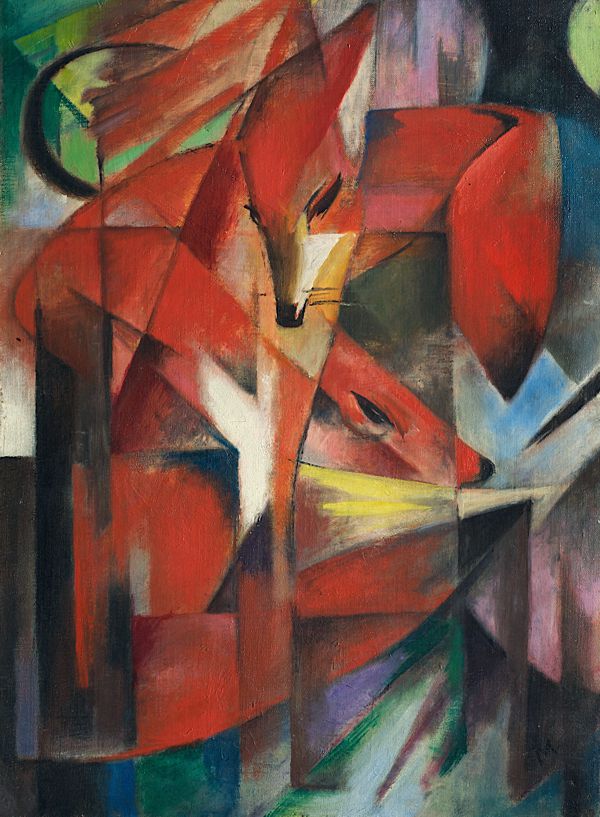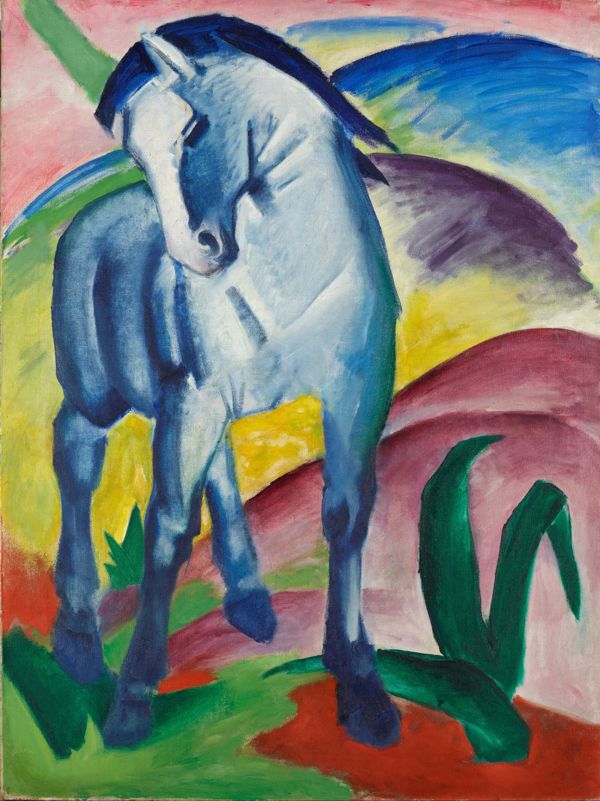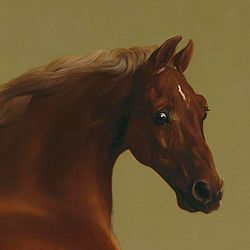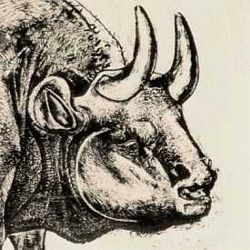Animals in Art - Franz Marc
Franz Marc was a German Expressionist artist who was a founder of Der Blaue Reiter group. He painted animals as they symbolized an age of innocence.

FRANZ MARC (1880 -1916)
'Foxes', 1913 (oil on canvas)
Franz Marc was a German Expressionist painter who formed Der Blaue Reiter group with Wassily Kandinsky. They were part of an artistic movement who were searching for spiritual truth through their art. Marc believed that color had a vocabulary of emotional keys that we instinctively understand, much in the same way that we understand music. This language of color was one element that Marc used to raise his art to a higher 'spiritual' plane; another was his choice of subject.
Tiger - A Fusion of Styles

FRANZ MARC (1880 -1916)
'Tiger' 1912 (oil on canvas)
Tiger, an oil painting from 1912, is a typical example of Franz Marc's style. It is a fusion of several influences: the expressive and symbolic use of color that he discovered in the paintings of Van Gogh and Gauguin combined with the fragmented and prismatic compositions of various Cubist styles.
The 'Tiger' and its surroundings are composed of geometric shapes whose similarity suggests both the camouflage of the tiger in its natural habitat and the harmony between the creature and its environment. Color is the main element used to separate the tiger from its background. Strong yellow and black shapes outline its form to convey the markings of the beast. The geometric shapes that make up its form are carefully proportioned and simplified to represent the tiger's features and its muscular body, while their rhythmic movement is echoed in the stylized shapes of the rocks and foliage of the background.
This is indeed an idealistic view of nature - an image designed to lift its subject above the brutality of nature in the raw.
Blue Horse

FRANZ MARC (1880 -1916)
'Blue Horse' 1911 (oil on canvas)
Franz Marc painted animals as they symbolized an age of innocence, an Eden before the Fall, free from the materialism and corruption of his own time. Animals in Marc's art are metaphors for his visionary outlook. They are viewed as idealized creatures in perfect harmony with the natural world they inhabit.
Franz Marc yearned for a life on a higher spiritual plane. In fact, before he took up art, he studied Theology with a view to entering the priesthood. Ironically, his death was in sad contrast to his hopes and dreams. He volunteered for service in the army at the start of World War 1 and never painted again. He was killed by a piece of shrapnel in 1916, during the assault on Verdun, the longest and bloodiest battle of the war.
Franz Marc Notes

AUGUSTE MACKE (1887-1914)
'Portrait of Franz Marc', 1910 (oil on canvas)
Franz Marc was a German Expressionist artist.
-
Franz Marc was a co-founder of Der Blaue Reiter (the Blue Rider), a group of artists in the German Expressionist movement.
-
In contrast to many Expressionists whose subjects had a social or political message, Franz Marc searched for a spiritual quality in his art.
-
Franz Marc painted animals which he viewed as innocent creatures in an ideal world, uncorrupted by man.
-
Franz Marc simplified his images into geometric shapes which fused the subject with its background.
-
Franz Marc was killed in 1916 at the Battle of Verdun during World War One.





